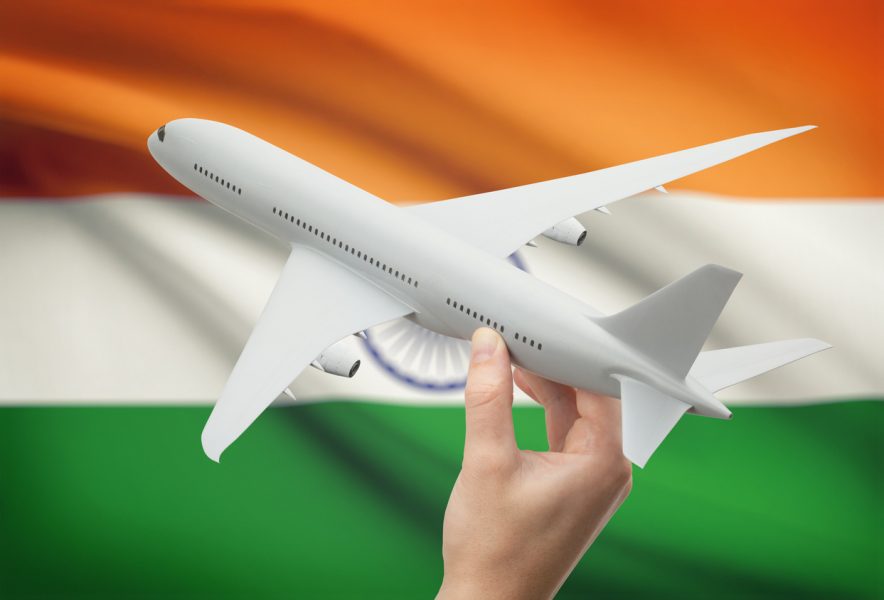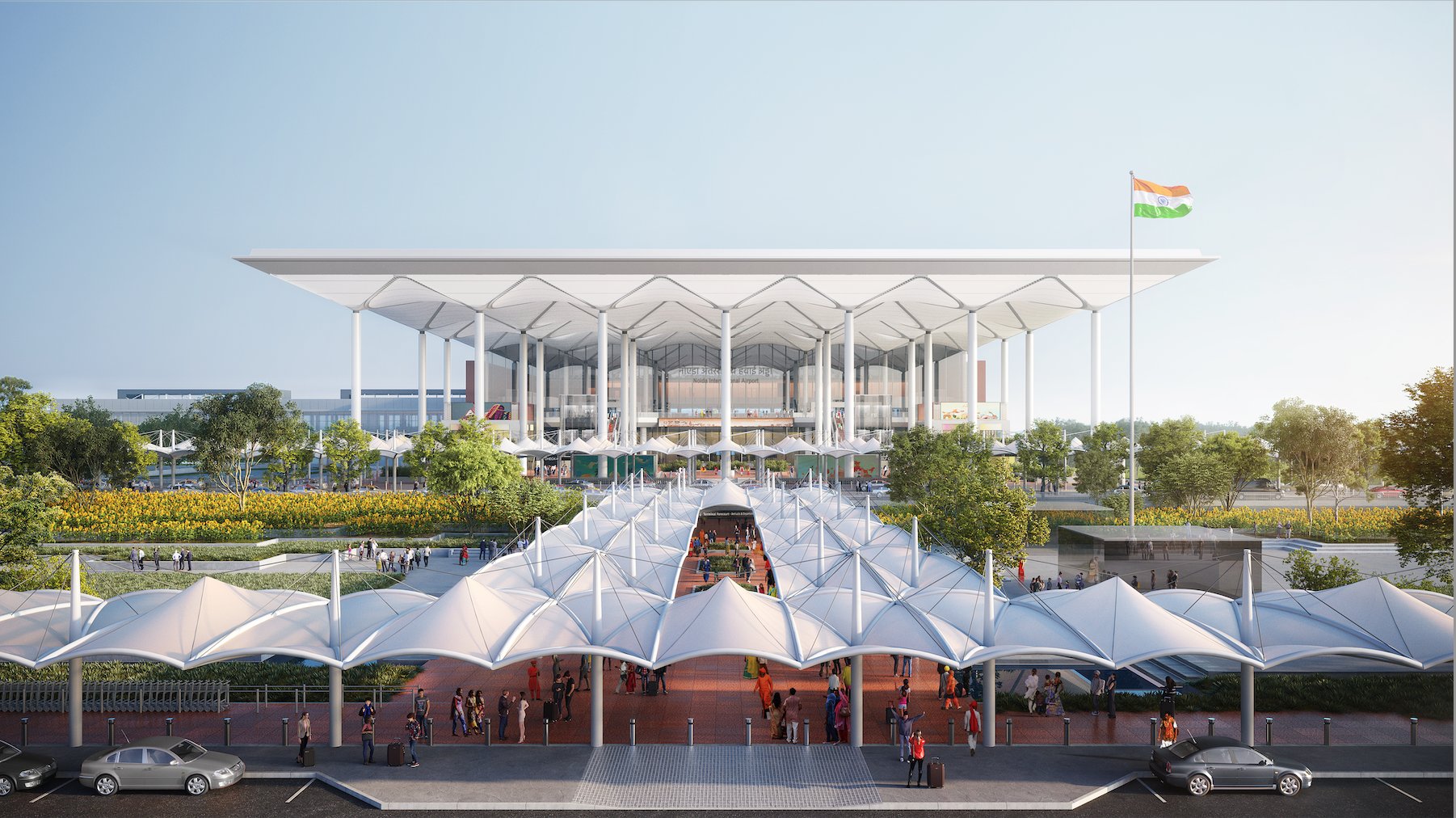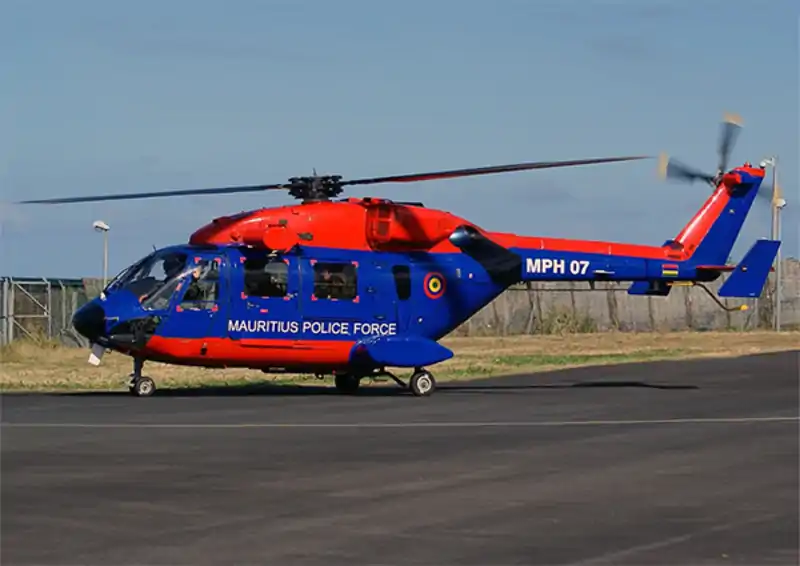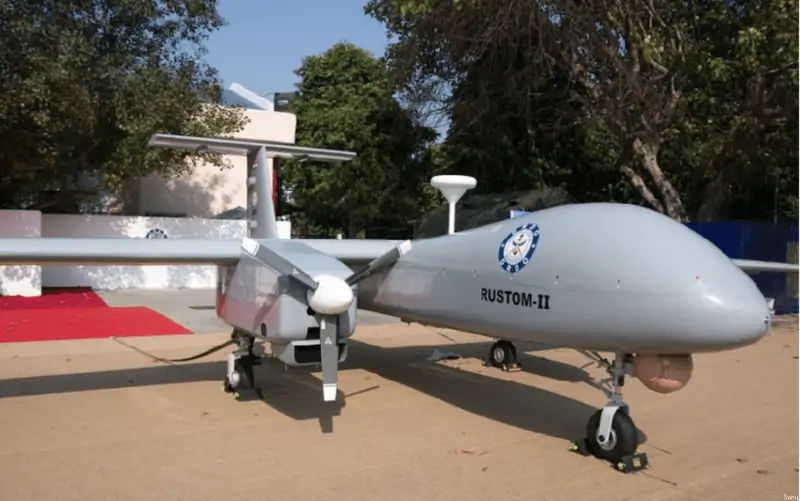HAL Q3 net profit jumps 24% YoY to INR 1155 cr; 84K crore aircraft orders pending
Radhika Bansal
13 Feb 2023
Hindustan Aeronautics (HAL) reported a 23.8% rise in consolidated net profit to INR 1,155.19 crore in Q3 FY23 as compared to INR 933.40 crore posted in Q3 FY22. Shares of Hindustan Aeronautics Ltd were trading 2.22% lower at INR 2,379.70 apiece on BSE during late deals on Thursday, February 9.
Revenue from operations was at INR 5,665.54 crore in Q3 FY23, down 3.9% from INR 5,893.82 crore recorded in the same period a year ago. Consolidated profit before tax declined 2.7% to INR 1,212.94 crore in the quarter ended 31 December 2022 as against INR 1,247.19 crore reported in Q3 FY22.
EBITDA or Earnings Before Interest, Taxes, Depreciation and Amortization dropped 31% to INR 985.5 crore in Q3FY23 as against INR 1,428.5 cr YoY, with a margin of 17.4%. Total expenses of the aerospace company rose 2% to INR 4,951 crore for the quarter under review. This was INR 4,840 crore in the corresponding quarter of last year.
HAL Q3 net profit jumps 24% YoY to INR 1155 cr; 84K crore aircraft orders pending
HAL is engaged in carrying out the design, development, manufacture, repair and overhaul of aircraft, helicopters, engines and related systems like avionics, instruments and accessories primarily serving the Indian defence programmes. As of 31 December 2022, the Government of India held a 75.15% stake in the company.
Shares of Hindustan Aeronautics were up 0.49% to INR 2,426.55 on the BSE.
84K crore orders pending, 55K crore coming up
In the wake of Prime Minister Narendra Modi's recent assertion that the state-owned Hindustan Aeronautics Limited has a huge number of orders for aircraft and choppers, the chairman of the PSU said that the state-owned entity has pending orders worth INR 84,000, while orders worth INR 55,000 were in the pipeline.
"Our order book position is comfortable, it stands at around INR 84,000 crore. We have been generating revenues of INR 25,000 crores which has shown a growth of 8%. We have sufficient contracts to be executed. Almost INR 84,000 crore of orders are pending. Another INR 55000 crore orders are in the pipeline, likely to materialize in the next six months to one year. So, all in all, we will have a healthy order book. Our capacity is 30 helicopters per annum. We will try to ramp it up to 60 helicopters. If demand is at its peak, then we can take it to 90 helicopters."
CB Ananthakrishnan, CMD, Hindustan Aeronautics Limited (HAL)
ALSO READ - HAL getting enquiries from various countries for helicopter orders
He further said sanction for the LCA (Light Combat Aircraft) Mark II, has come and that the Defence Research and Development Organisation (DRDO) and HAL will together be able to roll out the first LCA Mark II sometime in the year 2024-25.
While talking about HAL's Advanced Medium Combat Aircraft (AMCA) project, the HAL chief stated, "We are also a design partner in building prototypes in this project. In another five to six years, the product should be available. The execution timeframe is starting from February 2024. We are confident that we will be able to deliver the first aircraft in February 2024."
ALSO READ - PM Narendra Modi inaugurates the HAL helicopter factory in Karnataka
Prime Minister Modi had while inaugurating a HAL helicopter factory in Karnataka's Tumakuru recently lashed out at the Opposition for spreading "misinformation" about Hindustan Aeronautics Limited (HAL) in the past. PM Modi also recalled earlier Parliamentary sessions that were disrupted by the Opposition over the demand for a Joint Parliamentary Committee probe into the Rafale deal.
"Tumakuru has got a big helicopter factory today. Karnataka is a land of young talent and innovation. The world is seeing the manufacturing power of Karnataka from drone manufacturing to Tejas fighter planes. The double-engine government has made Karnataka the first choice of investors. The inauguration of the helicopter factory is an example of how the double-engine government works," PM Modi said.
The prime minister also said that the HAL facility will generate business worth over INR 4 lakh crore in the coming years and will supply a variety of helicopters to the armed forces.
Read next
Hindustan Aeronautics Limited (HAL) has handed over the Advanced Light Helicopter (ALH) Mark-3 to the Republic of Mauritius ahead of schedule. The delivery was made in the presence of the Indian External Affairs Minister, Dr. S. Jaishankar, and the Prime Minister of Mauritius, Pravind Kumar Jugnauth.
The ALH Mark-3 is an indigenously developed helicopter, built by HAL in India. The helicopter is designed to operate in a wide range of environments, from the hot and humid conditions of the tropics to the cold and dry conditions of the mountains.
The delivery of the helicopter to Mauritius is part of India's effort to strengthen ties with its neighbouring countries and to promote regional cooperation. The helicopter will be used for a variety of purposes, including search and rescue, medical evacuation, and disaster relief.
https://twitter.com/HALHQBLR/status/1623997925679583232
The ALH Mark-3 is equipped with a variety of advanced features, including a glass cockpit, a powerful engine, and advanced avionics. The helicopter is capable of flying at high altitudes and can operate in a wide range of weather conditions.
The delivery of the ALH Mark-3 to Mauritius ahead of schedule is a testament to HAL's commitment to quality and timely delivery. It also highlights India's growing capabilities in the field of aerospace and defence.
The handover of the helicopter was welcomed by the Prime Minister of Mauritius, who expressed his appreciation for India's continued support and cooperation. He also highlighted the importance of the helicopter in enhancing the capabilities of the Mauritian armed forces and in promoting regional security.
In conclusion, the delivery of the ALH Mark-3 to Mauritius ahead of schedule is a significant milestone for both India and Mauritius. It demonstrates the growing partnership between the two countries and highlights the important role that aerospace and defence can play in promoting regional cooperation and stability.
HAL's timely delivery of the helicopter is a testament to its capabilities and its commitment to quality, and it is sure to enhance the capabilities of the Mauritian armed forces.
Also read - LCA Mark 1A expected to be out by February 2024
Read next
India’s first indigenous advanced unmanned aerial vehicle (UAV) for strategic reconnaissance and surveillance will be launched next week. By June-July, a second indigenous weaponised drone is also expected to conduct its first flight test, according to a report by The Times of India.
The DRDO-developed Tapas-BH (tactical aerial platform for advanced surveillance-beyond horizon) drone will stream live the aerial and static exhibition of several aircraft during the Aero-India show in Bengaluru. So far, over 180 flights have been recorded on Tapas-BH.
“Tapas-BH will showcase its capabilities, which include operating at altitudes up to 28,000 feet, with an endurance of over 18 hours. The medium-altitude long-endurance (MALE) is DRDO’s solution for ISTAR (intelligence, surveillance, target acquisition and reconnaissance) requirements of the Army, IAF and Navy,” a defence ministry official said on February 9.
According to sources cited by the report, the smart anti-airfield weapon (SAAW) and anti-tank guided missile-capable Archer-NG (next generation) armed drone would undergo its first flight test between June and July. The Rustom-2 drone, also known as Tapas-BH, has a 20.6-metre wing span, a top speed of 225 kmph, and “a commanding range” of 1,000 km via satellite-based communication.
“The UAV, also capable of night-flying, is now getting ready for formal user-trial evaluation by the armed forces. It can thereafter go for production in large numbers by Hindustan Aeronautics (HAL), Bharat Electronics (BEL) and others,” a source said.
Recent conflicts, such as those between Armenia and Azerbaijan and the present Russia-Ukraine conflict, have highlighted the operational utility of drones and AI-enabled drone swarms.
However, India has fallen far behind other nations in the development of cutting-edge UAVs and had to resort to acquiring huge quantities of Heron and Searcher-II drones from Israel over the years. Additionally, the country is also leasing two unarmed MQ-9B Sea Guardian drones for the Navy from the US-based defence equipment manufacturer General Atomics.
Advanced indigenous drones will be much cheaper. The Tapas-BH, which currently flies with a foreign engine, costs around INR 40-45 crore with all its mission sensors. “The indigenous UAV engine is also now ready and in an advanced stage of evaluation. Importantly, an indigenous advanced ground control station can operate six to seven home-grown UAVs. The Archer-NG, with several more hard-points for weapons carriage, also draws a lot in design from the Tapas-BH,” he added.
Incidentally, Pakistan has received armed Wing Loong-II and Cai Hong-4 drones from China. India, too, has a long-standing agreement with the US to buy armed MQ-9B Predator drones. However, the hefty cost of the proposed deal — USD 3 billion (INR 24,000 crore) for 30 drones — has caused a change of heart about bringing the amount down to 18.
(With Inputs from The Times of India)
Read next
The earthquakes in Turkey and Syria left thousands of damaged buildings in their wake and astonished the world. An airport runway in Turkey's Hatay province was shown being torn in half by the earthquakes in a video that appeared online after the 7.8 magnitude earthquake.
Airport runway in Turkey's Hatay province
The shock waves from an earthquake affected the runway. But can it affect a plane flying above it, far high in the sky? Intuitively, no! It can appear absurd to even ask a question like this at first but consider this:
The components of the Earth we interact with are made up of more than rock; they also include massive oceans and a layer of gas 1,000 kilometers above the crust. Why shouldn't the atmosphere be affected by earthquakes in the same way as tsunamis on the bottom agitate the water above it?
Seismic waves released by earthquakes include Pressure Waves (P Waves) and Shear Waves (S Waves). S Waves cannot pass through liquids or gases; thus, when P Waves leave a solid object, like the crust, and enter the atmosphere, they manifest as Sound Waves. P Waves, however, often register below the 20-hertz hearing threshold. Infrasound is the term used by scientists to refer to waves in this range.
Most of the time, when individuals "hear" an earthquake, they don't hear any seismic waves. Instead, they can hear the sound made when seismic waves pass through solid objects, like a building and its contents rumbling.
Seismic Waves after an Earthquake are not heard. The waves pass through buildings and create rumble.
These sounds and the infrasound waves we just stated would not be audible from an airplane in the air. The waves gradually lose energy as they pass through the air due to a process known as “Attenuation”. The same explanation explains why the sound of the engine of an airplane is soft from across the airport and louder when at the runway. Attenuation is also why sunlight's intensity decreases when it must pass through ocean or atmospheric layers.
Therefore, even if seismic waves were to reach the standard cruising height of 30,000 feet, their strength would be so attenuated as a result of traveling through rock and air that the noise and motion of the airplane itself would be too great to drown out the waves. You wouldn't hear the earthquake from the aircraft and certainly wouldn't feel it.
Thus, even technically, an earthquake would not affect the flying plane. Although an Airline and US Air Force Pilot Ron Wagner encountered a different experience.
He remembered doing a night flight from one air force installation in Washington to another in Arkansas while piloting an aircraft.
It was nighttime, with a cloud ceiling of roughly 3000 feet. The cockpit windows appear to have been painted black in those conditions. As the Pilot spoke to approach control and was being vectored by them, they could see nothing but darkness inside the clouds.
They abruptly emerged from the cloud base. It was completely clear below them, and they could see lights for miles, including the base's rotating beacon and runway lights. They turned towards the runway after reporting to approach control that they could see the airport and had been given permission for a visual approach.
Then, he claimed, everything went pitch black once more, just as swiftly as the lights had appeared. They called approach to let them know they had lost visibility and wanted to continue vectors since they believed they had flown back into a cloud. But there was no reply from the tower.
They then verified their position using their navigational instruments but soon realized their flags were red, indicating that the ground signal had been lost. When their transponder stopped blinking, they realized they were no longer being radar-painted. There was no response from the approach, even after multiple calls.
And just then, a "very excited controller" called the plane as they were ready to change frequencies.
“They’d just had a big earthquake, which knocked out all power,” Mr. Wagner said. “He asked us to orbit visually on our own while they got things up and running again. That was the scary part because we saw nothing but black.”
According to Mr. Wagner, there is a chance that a tall antenna in the plane's path won't be visible since its lights won't be on because of the power loss. Although the radar wasn't back yet, the controller assured him that "we were in the clear at our altitude" because "he knew the area well, and we were in the clear at our altitude.”
“We continued to orbit — seeing nothing else in the whole world but the red glow from our flight instruments,” Mr. Wagner continued.
“Finally the runway lights came back on. The controller then told us to continue to orbit while they sent some trucks down the runway to check for cracks. We were told the runway was fine a few minutes later, so we finally went in visually and landed.”
Earthquakes won't directly affect a flying plane above it
Therefore, earthquakes can affect pilots in the same way they affect everyone on the ground and by extension, the plane and everyone else on it.
But would you experience or hear an earthquake from a plane flying ten kilometers above it? No, you wouldn't likely notice anything.
With Inputs from: Forbes
Read next
India jumps to 55th from 112th position in ICAO aviation safety oversight ranking: DGCA
Admin
11 Feb 2023

India's aviation safety oversight ranking has jumped to the 55th position from 112th place earlier, with a significant improvement in the country's score under the ICAO coordinated validation mission, according to regulator DGCA.
Under its Universal Safety Oversight Audit Programme (USOAP) Continuous Monitoring Approach, an ICAO Coordinated Validation Mission (ICVM) was undertaken in India from November 9 to 16, 2022.
"After the final report India's safety oversight capability ranking has climbed from 112 to 55. It may be noted that this ranking is dynamic and is contingent upon the outcomes of various Audits undertaken by ICAO," the Directorate General of Civil Aviation (DGCA) said in a statement on Friday, February 10.
ALSO READ - DGCA assures India’s aviation sector performed best to date in the ICAO safety audit
The International Civil Aviation Organization (ICAO) undertakes audits of all the contracting states under this programme. Last year's mission to India covered the areas of LEG, ORG, PEL, OPS and AGA on-site while the area of AIR was validated virtually during the same period.
The Effective Implementation (EI) of six areas were assessed. LEG is Primary Aviation Legislation and Specific Operating Regulations; ORG is Civil Aviation Organisation; PEL is Personnel Licensing and Training; OPS is Aircraft Operations; AGA is Aerodrome and Ground Aid and AIR is Airworthiness of Aircraft.
The ICAO team reviewed the progress in addressing 137 Protocol Questions (PQs) and subsequently, "the status of 101 PQs were changed to satisfactory and that of 1 PQ to not applicable.. the status of 35 PQs remained not satisfactory, resulting in an updated overall EI of 85.65%," the statement said.
According to the statement, as the scope of the mission did not include the areas of AIG and ANS, the updated overall EI of 85.65% is calculated based on the latest USOAP results on record for these two areas. AIG is Aircraft Accident and Incident Investigation, and ANS is Air Navigation Services.
During the mission, the team visited industry and service providers to validate the capability of the country to supervise the activities of these service providers, airlines and organisations.
ALSO READ - India moves up to 48th position in the global aviation safety ranking by ICAO
The USOAP audit of the civil aviation system of India conducted in 2017 generated an overall EI of 55.15% for the eight critical elements of the country's safety oversight system. During the ICVM conducted in India in 2018, the ICAO team reviewed the progress made in the areas of LEG, ORG, AIG, ANS, and AGA. Then, the score improved to 69.95%, the statement said.
Read next
Air India SATS to develop a multi-modal cargo hub at the upcoming Noida International Airport
Admin
11 Feb 2023

The Noida International Airport (NIA) has selected Air India SATS (AISATS), a leading organisation in the cargo and logistics sector, to develop a multi-modal cargo hub (MMCH) at the upcoming airport, an official statement said on Friday, February 10.
Spanning 80 acres of land, the upcoming cargo hub will provide quick, convenient and intermodal connectivity to and from manufacturing hubs in the country. As of now India Gandhi International Airport in Delhi is ranked number one as the biggest cargo hub in India.
ALSO READ - Noida International Airport to become a significant MRO hub in India
Air India SATS to develop a multi-modal cargo hub at the upcoming Noida International Airport
The cargo and logistics infrastructure and ecosystem will cater to a differentiated catchment and several upcoming industrial clusters in NCR and Uttar Pradesh, creating a cargo gateway for Northern India, the statement added.
"We are convinced that our novel approach to plan and develop a multi-modal cargo hub with integrated facilities and seamless processes will support the cargo and logistics industry in North India. The Noida International Airport cargo hub will help Western Uttar Pradesh and the NCR fully develop its cargo and logistics potential.
The multi-modal cargo hub will bring predictability in operations and address existing logistics bottlenecks through digitisation and enable seamless and fast processes. We are confident that Air India SATS (AISATS) is the perfect partner to bring this vision to life, owing to its global footprint and long-standing experience. We look forward to this strategic partnership with AISATS to make NIA a preferred cargo hub in Northern India."
Christoph Schnellmann, CEO, Noida International Airport
AISATS has expertise in ground and cargo handling and is present at five airports in India. It handles 1,30,000 flights annually both in cargo and ground handling.
According to the statement, the MMCH will comprise an integrated cargo terminal combined with an integrated warehousing and logistics zone. This unique logistics zone will offer a transhipment centre, as well as a warehouse zone for freight forwarders and integrators. The MMCH will also provide for transportation facilities to support road-to-road, road-to-air, and air-to-road movements.
"We are excited to partner with Noida International Airport to build a state-of-the-art, modern, and efficient cargo infrastructure, by making the best use of technology. India is envisioned to become the next logistics hub for the world and the government is taking necessary measures to make logistics more efficient and globally competitive.
We are aiming to develop world-class infrastructure to deliver a seamless, best-in-class cargo experience for all stakeholders. Catering to a large catchment area with a huge growth potential owing to multi-modal connectivity, we are certain that this multi-modal cargo hub will truly become the gateway to North India."
Sanjay Gupta, CEO, Air India SATS
Overall, the infrastructure at Noida International Airport's MMCH is focused on efficiency, scalability, seamless process flows as well as common digital infrastructure and systems.
ALSO READ - Noida International Airport (NIA): A Sneak Peek
Construction work of the first phase of the Noida International Airport in Jewar, Gautam Buddh Nagar, some 75 km off Delhi, is currently underway and scheduled to be completed in 2024.
Air India has a detailed plan to connect every product of UP to the rest of India
Natarajan Chandrasekaran, Chairperson of Tata Sons at the Uttar Pradesh Global Investors Summit, which kicked off on February 10 said “Air India has a detailed plan to connect every product of UP to the rest of India and potentially to the important destinations of the world.”
Chandrasekaran also noted that the group has huge investments in Noida - both from the TCS and Air India point of view. “We are going to build an integrated multimodal air cargo through Air India SATS with our partner Zurich airport in the new Jewar airport.”







Comment